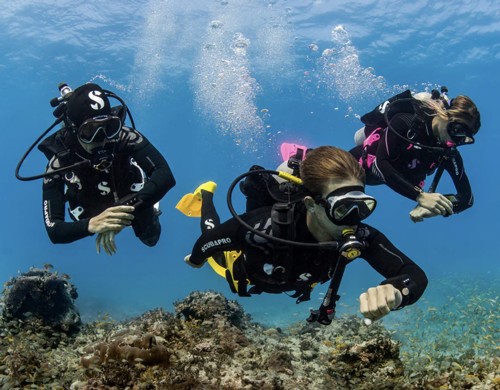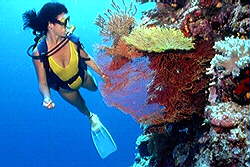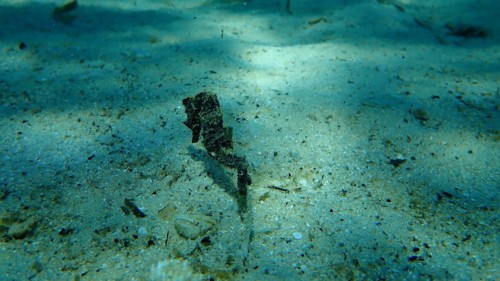
![]()
 Online Scuba Lessons |
 Online Nitrox Lessons |
Scuba Navigation and how to get
back to the Dive Boat everytime!!


![]()
 Online Scuba Lessons |
 Online Nitrox Lessons |

After teaching the last Master Diver class, I noticed an interesting misconception with my students when they were evaluated on their navigation skills. The skill evaluation is fairly simple; however, due to its simplicity not all students pass the first time. The student must navigate using at least three azimuths and surface within 30 feet of the boat. An azimuth is an angle measured clockwise from north to south, or in diving terms the combination of a bearing and a heading (or "leg" if you will). A triangle has three sides, each being a leg of the course, each being an azimuth of the course.
One of the tricks to proper navigation is to move very slowly. Nothing in the exercise says that you must swim as fast as you can to complete the evaluation. In fact, the faster you swim the less successful you will be. You will use more air; your team followers dislike you because they had to hustle to keep up with you (although most of them, Dive Master certified divers have to grin because they did the same thing when they were evaluated); and you can't take time to see the underwater sites (which is why you are there to begin with).
Another trick is to use the natural navigational aids that God gave you. All of us possess the memory and instinct to find our way around to some extent without the use of instruments or a map. (For the benefit of men out there, memory and instinct have nothing to do with driving past your fourth service station while telling your honey that you know a short cut.)



Just like so many other Scuba skills, good powers of observation are key to successful navigation. Looking for the direction of sand ripples on the bottom, a shadow from the surface, or movement of the water and plant life (such as hydroids and sea fans bending in the surge) can be critical clues to where you are, or where you should be. Observe what the bottom looks like and how it behaves. Depth can be an important indicator of direction, especially when diving near shore. Use larger rocks and the orientation of the reef to gain insight as to which direction you should swim.
Yet another trick is to believe the compass which is sometimes the hardest of all skills to master. The human brain has powerful memory capabilities. Use your short term memory to record your clues, and use them to verify, but not contradict, your compass. If in doubt as to which is right, the compass wins. The compass can't think it works no matter what your brain thinks!
The most important trick, and probably the
hardest to learn, is how long to make each leg and when to
turn. Some of the other agencies and instructors will tell
you all sorts of neat things to help you find this out.
You could count fin kicks! But ten kicks up current is not
the same distance as ten fin kicks down current. Humm
You could time each leg on your dive watch or computer
timer! But ten minutes up current isn't the same as ten
minutes down current. Humm
You could keep
track of air! But 1000 pounds up current isn't the
same as 1000 pounds down current. Its the current
thing that gets you every time and to make matters worse at
some point in your course you are going to have to swim "cross
current" which requires another skill called "crabbing".
So, how the heck does one take into consideration the current
factor? Well, you practice and practice and practice
until you simply know when to turn and how long to make each
leg. You "get a feel for it". It sounds funny, but
if you were to ask the graduates of the Master classes how they
do it they would give you the same answer.
Practice, practice, practice - then you develop a "magic" for
navigating.
I'll see ya at the back of the boat . . .
Bwana
![]()

Aquastrophics Dive & Travel
(928) 680 - DIVE (3483)